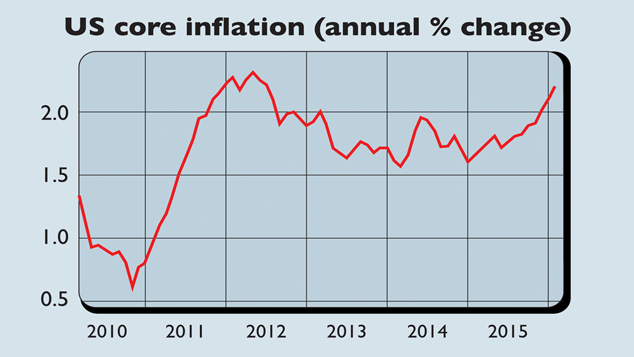
Inflation is about the last thing on investors’ minds right now. The market scare over global growth, along with the tanking oil price, has fuelled fears of deflation, and expectations of interest-rate hikes have receded ever further into the future. But not for the first time, markets may be looking the wrong way.
In America the annual rate of consumer price inflation is 1.4%. That doesn’t exactly scream Zimbabwe, but underlying, or core, inflation – which gauges domestic inflationary pressure – is surprisingly firm. Strip out volatile food and energy prices and inflation is up 2.2% year-on-year, the fastest rate since the summer of 2012. Inflation is “alive and kicking”, says Omair Sharif of SG Americas Securities.
The growth outlook is solid, as the healthy labour market and lower energy prices should fuel consumption, which comprises two-thirds of GDP. The impact of previous falls in the oil price will also fade from the annual calculation of inflation over the next few months.
The central bank is unlikely to hike interest rates in March, but “we will look back and say that [it] made a mistake”, says Stephen Stanley of Amherst Pierpont Securities. The Fed falling behind the curve, necessitating steeper hikes later to knock inflation on the head, implies potentially heavy turbulence in overpriced debt markets. And it’s not just America.
Global core inflation has reached 2.4%, its highest level since 2000 (except for a brief period at 2.5% in the autumn of 2008). This is due largely to sticky inflation in emerging markets. JPMorgan thinks global headline inflation will bottom at 1.5% in June this year before recovering to 2.6% by December. Take the deflation scare with a pinch of salt – and hold onto your gold.